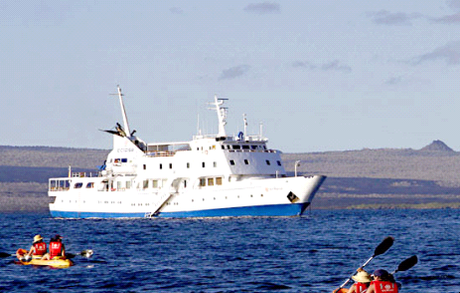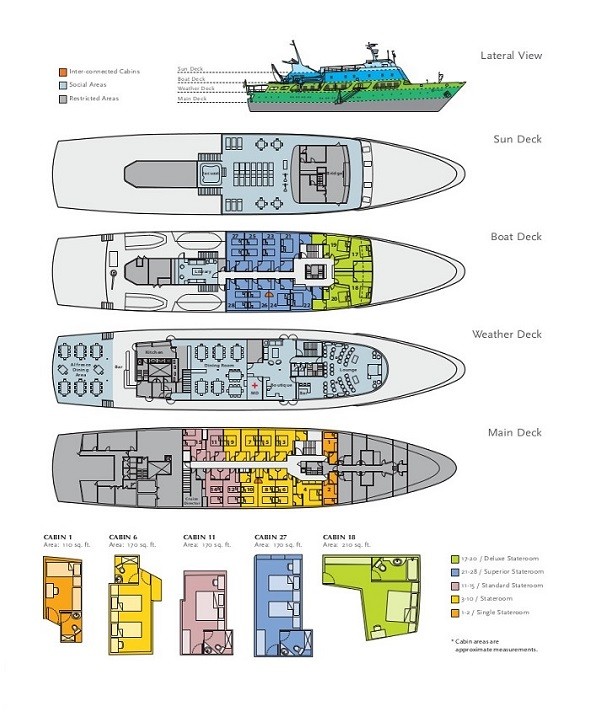
The Galápagos Islands are an archipelago of volcanic islands distributed on either side of the Equator in the Pacific Ocean, 926 km west of continental Ecuador.
Combining the best of facilities and accommodation, the MV Eclipse retains the smaller boat atmosphere but has the space of a larger ship. With a great itinerary and superb guides she is one of our very favourite top-end choices.
Additional Charges are;
Flights to the islands, fuel surcharge - approx $260 pp, national park fees and tourist transit cards all per person.
Specialised Family departures available-
Discounts available when child under 12 shares with adults
Includes childrens learning materials, cabin decorations, activities on board with the Children's Co-ordinator.
During peak season Easter (March 28 - April 04), Christmas (December 19 - 26) and New Year (December 26 - January 02) a surcharge of $400.00 per person apply
There are no future departures for this trip at this stage.
Eclipse

Vessel Type: Luxury Expedition
Length: 64 metres
Passenger Capacity: 48 (in 26 cabins)
Built: 1984 / refurbished 2003
The Eclipse has surpassed the other options available in the Galapagos Islands, offering small excursion groups, unparalleled levels of personalized service and the amenities of a larger boat while still preserving the relaxed exclusivity of a smaller vessel.
This expedition Vessel was converted specifically for cruising in the islands, and was designed to meet the exacting demands of upscale travel. The Eclipse is the perfect base for any Galapagos experience, with the highest standards of quality caring of the environment. It is a generously proportioned ship with a small yacht atmosphere.
The Eclipse has 24 spacious, fully air-conditioned staterooms, with either a queen or twin bed configuration, plus 2 single cabins.
Every cabin boasts either picture windows or large portholes, providing a view of the surrounding waters. All the ship’s twin beds can be converted to king-size beds upon request, always looking for comfort based on the needs of our guests.
The Eclipse's features include a library, a boutique, a lounge and an infirmary, with a doctor on board at all times, seeking the welfare and safety of our passengers. One of the most popular areas on board is the observation/sun deck, ideal for stargazing, whale watching, or simply lazing in the Jacuzzi.In addition to the elegant indoor dining room, there is an al fresco dining area, where you can enjoy the islands spectacular scenery.
All meals are served as a buffet style with all soft drinks included.


